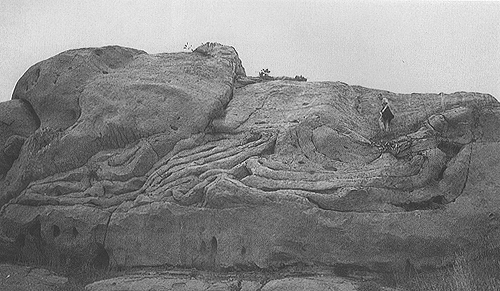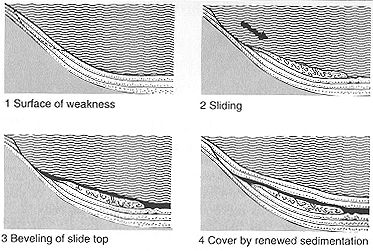

Box-shaped folds in a sandy paleoslide
Plate 133


Box-shaped folds in a sandy paleoslide
Plate 133
It is unusual to find fold-style deformation in thick and very thick sandstone beds. They commonly respond to stresses as rigid bodies (compare with next plate). The deformational motif is here a single recumbent fold with an angular hinge zone (box fold). Disharmonic folding can be noted: an outer shell, made by a huge sandstone bed, can be distinguished from an internal "stuffing" where thinner beds were almost rolled up. The outer shell outlines a single, major fold while the "stuffing" is made of several folds of smaller size and curvature.
The intercalation of mudstone beds is the key to explain this kind of folding. The plastic mud partings provided levels of weakness and allowed mutual movements of sand beds. The different thickness of sand layers made the rest: bed thickness constrains the radius of curvature of the hinge, imposing a relatively rigid box pattern to the thicker unit. Thinner beds could consequently be accommodated by tighter folding within the outer shell.